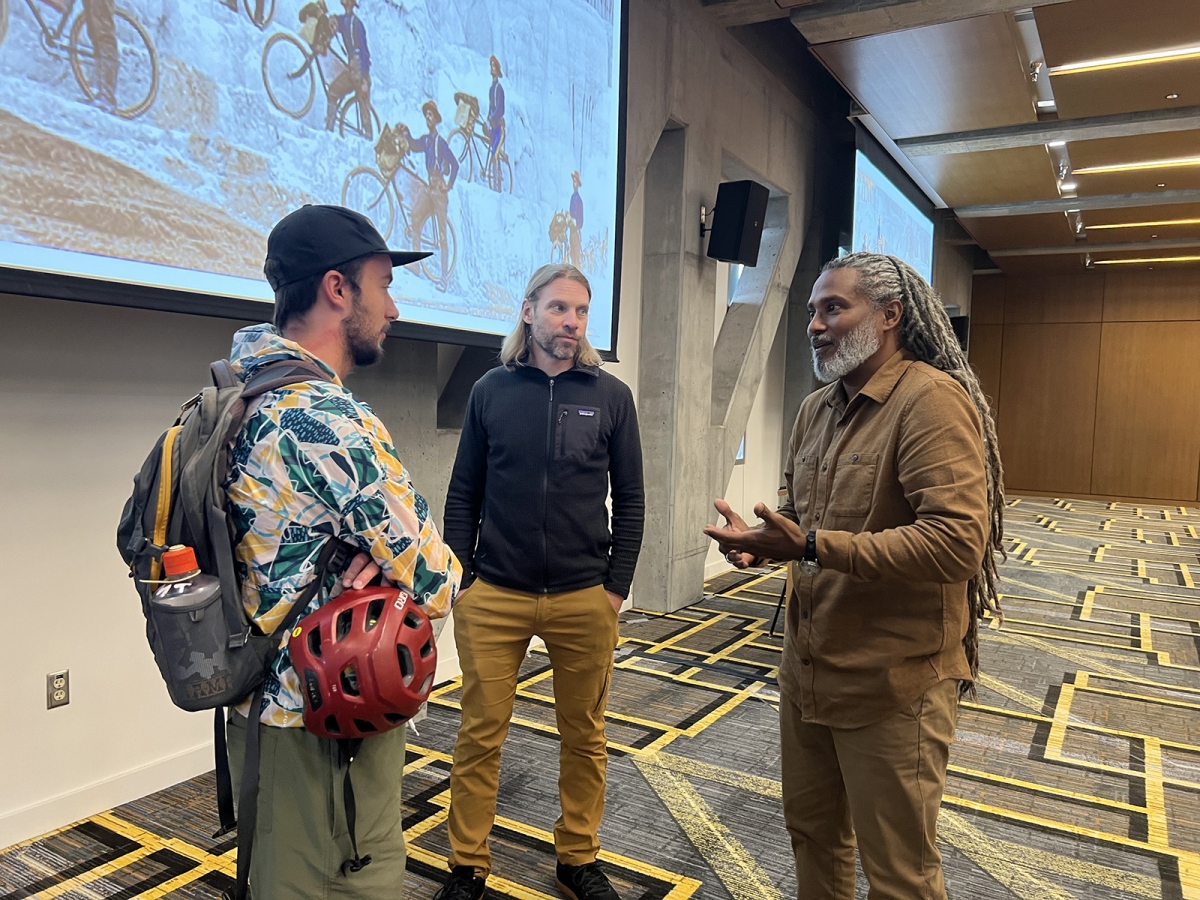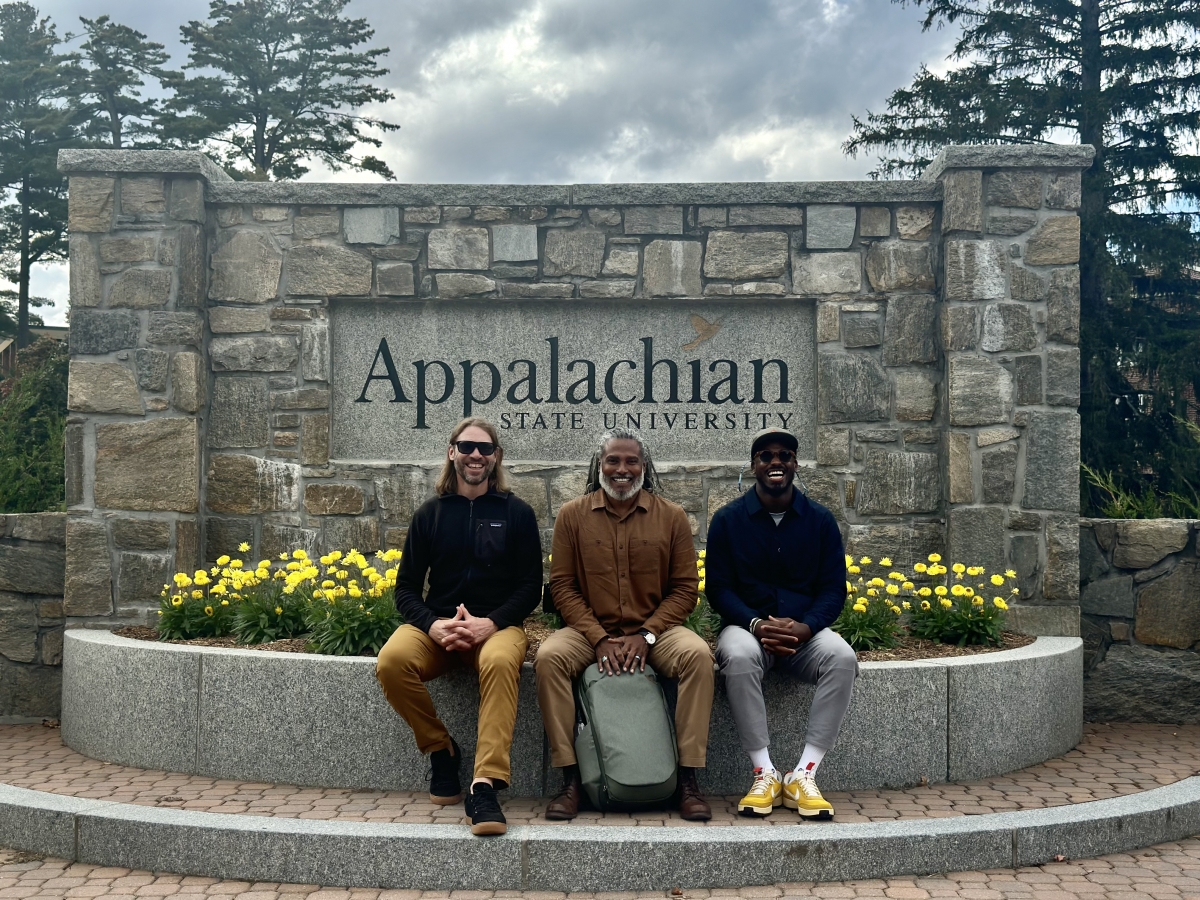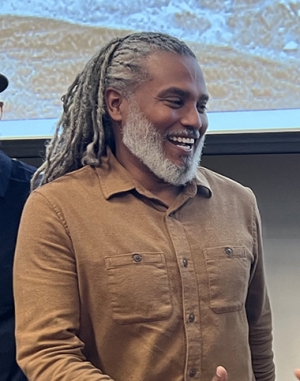By Amanda Mlekush
Bicycle nomad Erick Cedeño visited Appalachian State University on Tuesday to share some of his epic bicycle adventures, from following the path of the Underground Railroad freedom fighters by riding from New Orleans to Canada to completing the 1,900-mile, 41-day rigorous trek from Montana to Missouri made by the 1897 group of 25th Infantry known as the ‘Buffalo Soldiers’ bicycle corps.
‘Buffalo Soldiers’ is a term used to describe Black men who served in the U.S. Army during the mid-to late 1800s. According to the National Park Service, the name originated because of the soldiers’ dark, curly hair, which resembled a buffalo's coat, and because of their fierce nature in battle. Many of the soldiers were some of the first park rangers out in the western states.

(Caption: Erick Cedeño (right) talks with some attendees after his presentation.)
The Army’s mission for the 1897 bicycle corps was to test the bicycle as an alternative to horseback, which at that time was the Army’s primary transportation method. Horses could be unpredictable in battle, and bikes were cheaper to maintain than a horse. (Automobiles would be created 11 years later.)
Pairing his love of history and cycling, Cedeño created and retraced the route of the 1897 corps, riding in homage to individuals he feels have not received proper dignity or recognition through the years.
“I want the world to know how awesome these guys (the Buffalo Soldiers) are,” he said. “They were pioneers in a lifestyle that I love–traveling by bike–and many of them died without any recognition for their sacrifices. They are my superheroes.”
To be as authentic as possible to the soldiers’ feat, Cedeño pieced together the route following the railroad lines from Missoula, Montana, to St. Louis, Missouri, using diaries, newspaper clippings, photos, historical maps and ledgers. He committed to riding the same route on the same day of the year (albeit 125 years later) while maintaining the rigorous goal of averaging 50 miles per day across western terrain.
“I tried to camp where they camped, and eat where they ate,” he said. “It was a grueling expedition, even for me, riding a modern bike.”

(Caption: Erick Cedeño (center) visits a Boone campus landmark with Kristian Jackson (left) and Trey Thomas (right).
Cedeño visited App State through the efforts of Kristian Jackson from Recreation Management and PE, who secured funds from App State’s Advancing DEI grant, the University Forum Committee and the Recreation Management Department’s Fund for Excellence. Jackson was connected to Cedeño through Recreation Management alumnus Trey Thomas, ‘12, who works in the bicycle industry.
“Erick's talk was inspiring, and he made several unique and important points,” said Jackson. “The first was his statement that ‘he wants to travel as historically as possible.’ I took this not in the "reenactment" sense, but in a way he was trying to "be with" the people who made that expedition -- and to feel what it was like for them to struggle.”
Cedeño encouraged the attendees of his presentation to consider their own dreams, just as he did when he set out on a seemingly impossible solo ride across multiple states on mostly gravel roads. “Listen to yourself, and follow your vision. Try to avoid the naysayers who create static in your frequency.”
Related Articles and Videos:
Watch the seven-minute video: Truth and Dignity: Bicycle Nomad
Outside: Erick Cedeño Rides Through The Pain
NYT: Black Soldiers Cycled 1,900 Miles Across the US. So He Did, Too.

